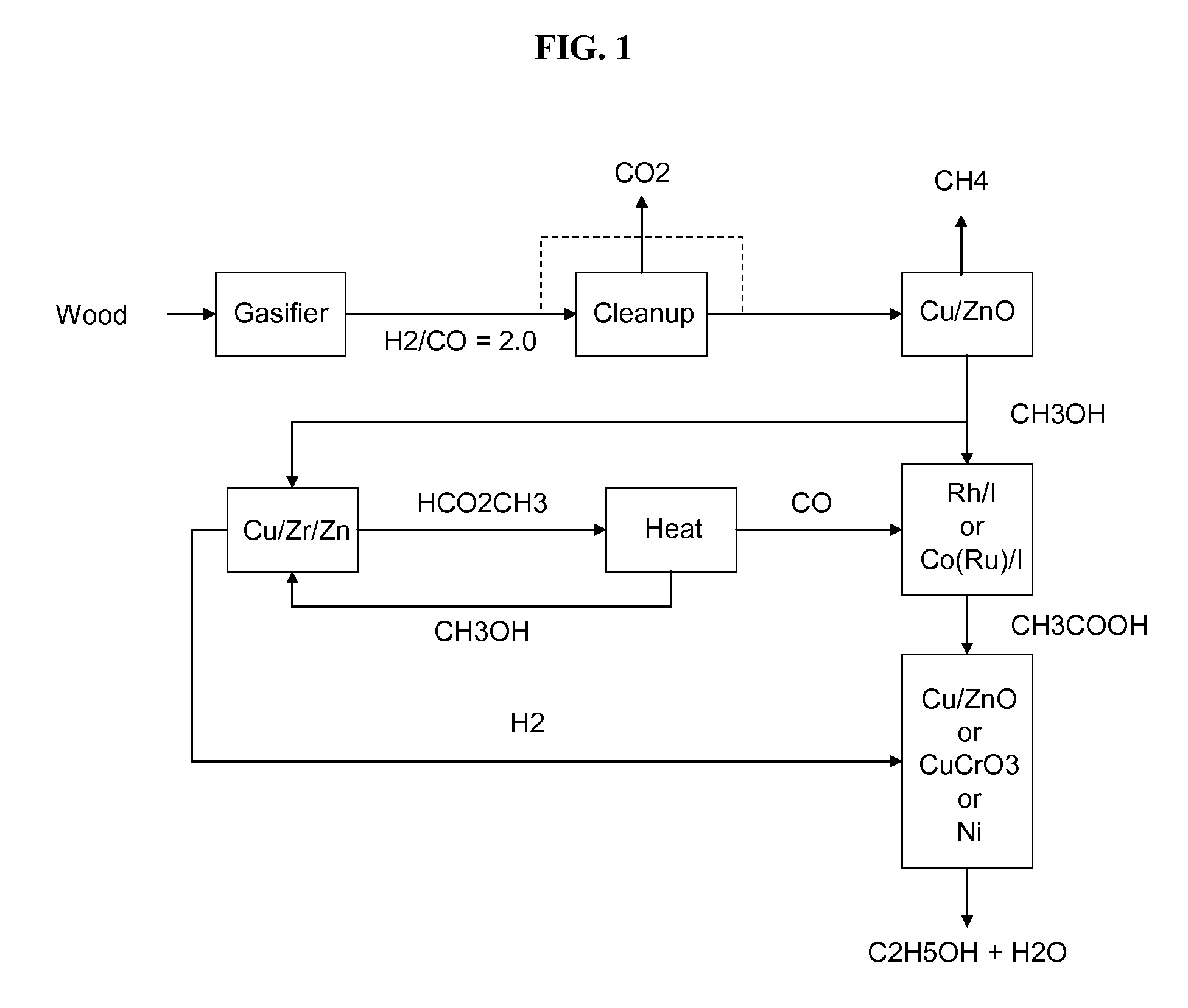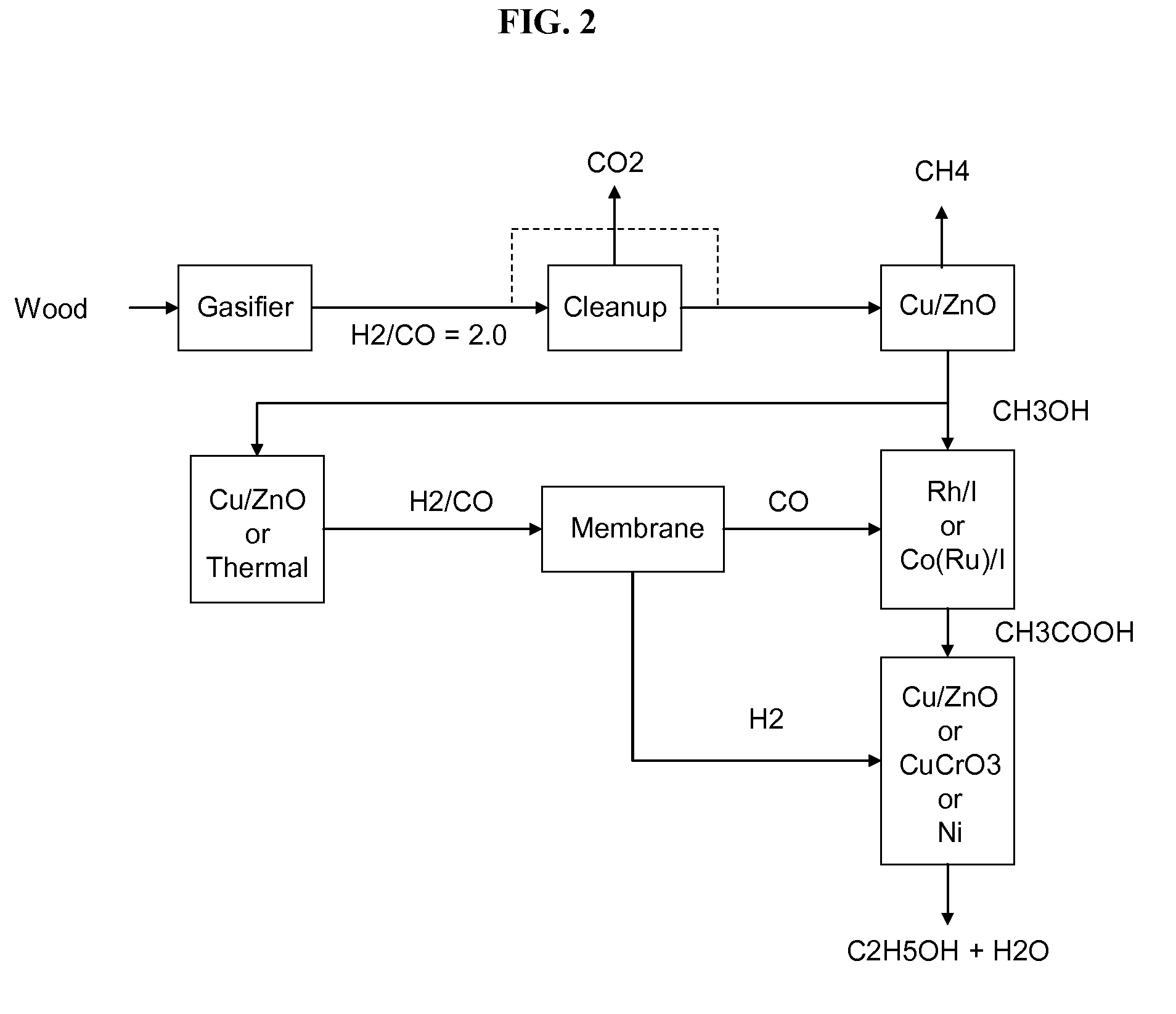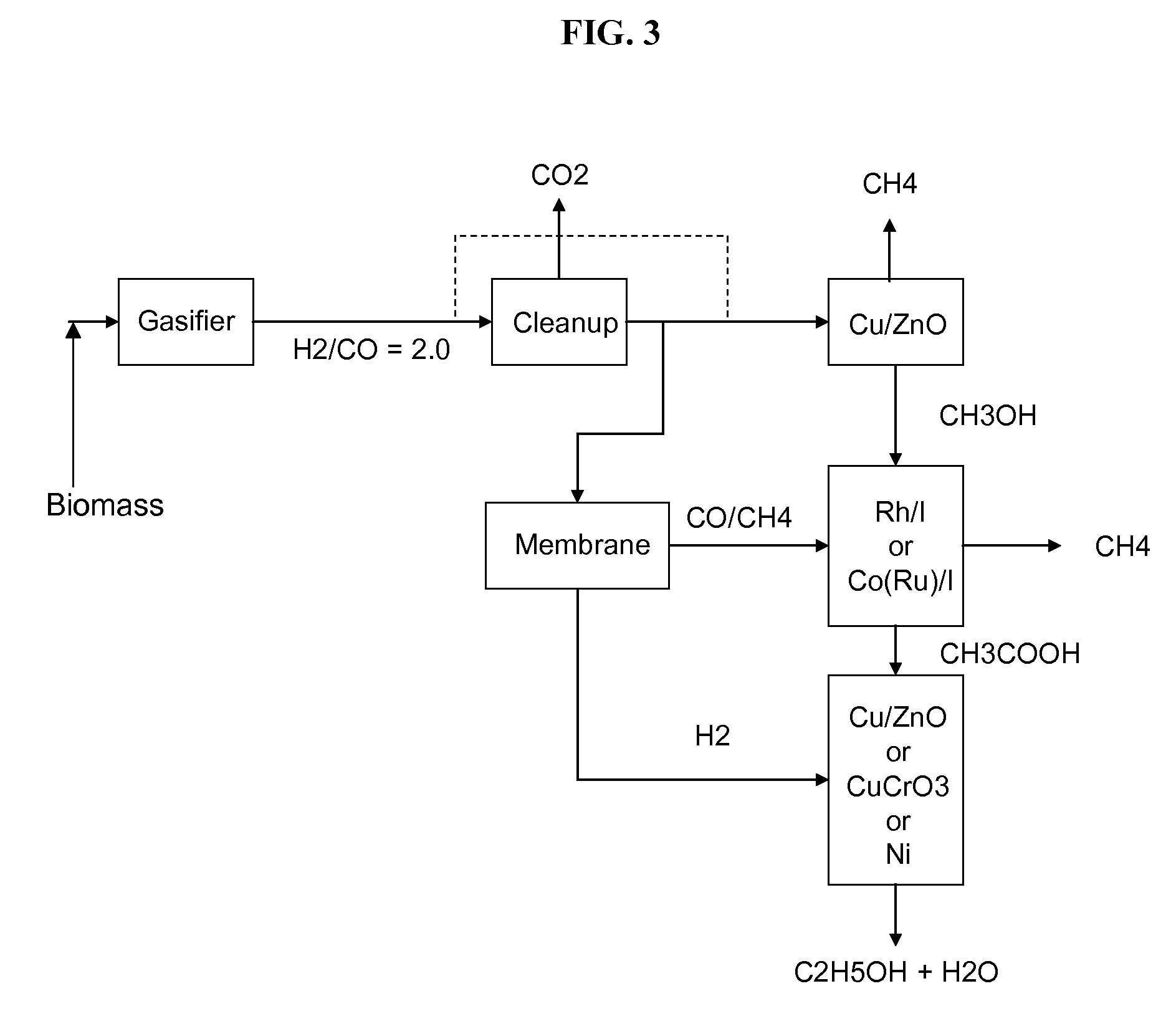Methods and apparatus for selectively producing ethanol from synthesis gas
- Summary
- Abstract
- Description
- Claims
- Application Information
AI Technical Summary
Benefits of technology
Problems solved by technology
Method used
Image
Examples
example 1
[0103]This example demonstrates an exemplary embodiment for acetic acid reduction with syngas using a Co / Mo / S / K catalyst. The catalyst is prepared such that Co and Mo are combined with an atomic ratio of Co to Mo of about 0.5. The catalyst composition also comprises sulfur, in an initial atomic ratio of S to (Co+Mo) of about 2. Potassium is introduced as K2CO3 so that the atomic ratio of K to (Co+Mo) is about 0.4. This catalyst composition is subjected to an experiment as described.
[0104]A total of 56.75 g of pelletized catalyst is loaded into a 1″ outer-diameter reactor tube. The catalyst is activated for 24 hours at 280° C. and 1500 psig in a flow of 1.5:1 H2:CO (molar ratio) before use. Syngas is passed over the catalyst under the following conditions, with the results in column A. Next, acetic acid is injected, using a high-pressure solvent pump and under similar conditions, with the results shown in column B.
[0105]The overall carbon closure for experiment A is 98.5% and for exp...
example 2
[0106]This Example 2 employs the process configuration shown in FIG. 6. In Reactor 1, methanol is generated and acetate is reduced. The following reactions are contemplated in Reactor 1:
CO+2H2→CH3OH (i)
CO+H2O→H2+CO2 (ii)
CH3COOH+CH3OH →CH3COOCH3+H2O (iii)
CH3COOCH3+CH3CH2OH→CH3COOCH2CH3+CH3OH (iv)
CH3COOCH3+2H2→CH3CH2OH+CH3OH (v)
[0107]Reactions (i)-(iv) are equilibrium-limited. Reaction (v) operates at about 85% (±5%) conversion of methyl acetate.
[0108]In Reactor 2, methanol is converted to acetic acid according to:
CH3OH+CO→CH3COOH (vi)
[0109]Reaction (vi) operates at about 98% conversion of methanol.
[0110]Syngas is fed to a gas-separation unit, from which substantially all of the hydrogen and about half of the methane and carbon monoxide is fed to Reactor 1. Products from Reactor 1 are cooled and the gases are recycled (at a recycle ratio of about 3) along with a purge stream.
[0111]The liquid products are separated with the separation being substantially controlled between ...
example 3
[0113]Example 3 relates to the variation shown in FIG. 5. In this experiment, ethyl acetate is injected as a liquid into a plug-flow reactor packed with a commercial Cu / ZnO / Al2O3 methanol-synthesis catalyst (MK-121, Haldor Topsoe). The ethyl acetate is reduced to high-purity ethanol using a flow of 96 vol % H2 (with 4 vol % Ar as a tracer) under the following conditions: pressure=650 psig; temperature=220° C.; and GHSV (vol / vol)=14,500 / hr.
[0114]Approximately 87% of the ethyl acetate is reduced to ethanol in a single pass. Approximately 96% of the ethyl acetate is accounted for. Small amounts of methane and methanol are noted. The composition of the resulting product is 87.9 wt % ethanol, 10.9 wt % ethyl acetate, and 1.1 wt % methanol on a dry basis. The product also contains a small amount of water (about 0.3 wt %).
PUM
| Property | Measurement | Unit |
|---|---|---|
| Fraction | aaaaa | aaaaa |
| Fraction | aaaaa | aaaaa |
| Fraction | aaaaa | aaaaa |
Abstract
Description
Claims
Application Information
 Login to View More
Login to View More - R&D
- Intellectual Property
- Life Sciences
- Materials
- Tech Scout
- Unparalleled Data Quality
- Higher Quality Content
- 60% Fewer Hallucinations
Browse by: Latest US Patents, China's latest patents, Technical Efficacy Thesaurus, Application Domain, Technology Topic, Popular Technical Reports.
© 2025 PatSnap. All rights reserved.Legal|Privacy policy|Modern Slavery Act Transparency Statement|Sitemap|About US| Contact US: help@patsnap.com



